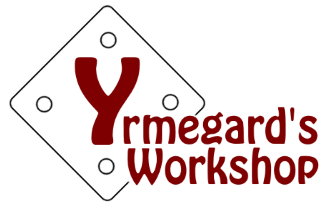Text-based pattern vs turning sequence tabel
Working with a text-based pattern is actually very straightforward – especially when it’s the kind you can print out from GTT. Essentially, it’s a table: each row corresponds to a weaving row, with an indication of which tablets turn forward and which turn back. By sliding a ruler (or even just a piece of paper) along the table, you can really simplify the process of finding your place as you weave or after a break.

But here’s what I absolutely don’t like about text patterns: they’re impossible to remember. Unless it’s five rows long, of course. Yes, you can weave just by looking at the pattern on the band itself, but re-learning the logic after each break takes far too much time, and with a fine pattern it’s really hard on the eyes.
All that to say: I quickly sketched out a turning sequence for the current belt – and the work sped up dramatically, because the visual layout stuck in my memory almost instantly. I also realised that, based on the structure of the chart, the central motif is actually the one with three small diamonds that stand out for me on the belt as well, not the large diamond.
40 centimetres woven by now.
Photos of the finished band along with basic information about it can be found in the gallery: "Fox tail".
